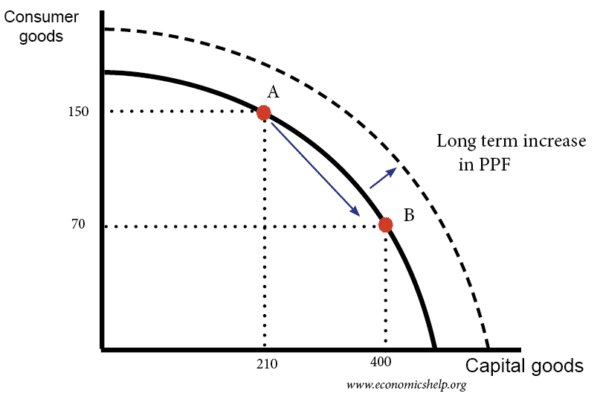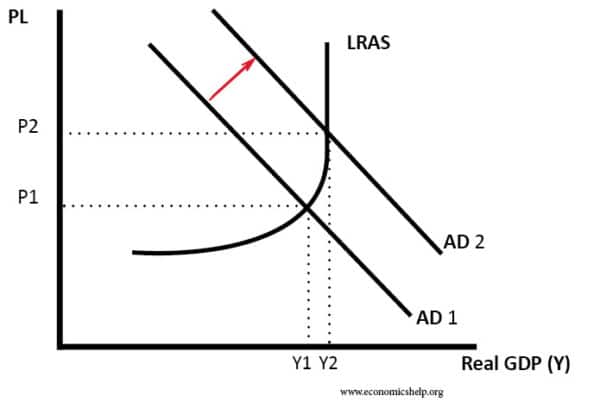Readers Question: Identify and explain clearly the determinants of a nation’s productive capacity. How does the concept of productive capacity differ from a nation’s actual GDP?
A production possibility frontier shows potential output. Here an investment in capital goods enables the PPF curve to shift to the right.
Factors that affect productive capacity
A nation’s productive capacity reflects the potential output of an economy. It depends on:
- Size of the workforce (quantity of labour). This is the number of people of working age who are economically active. The labour force can also be influenced by levels of net migration – for example, migrants can fill in labour vacancies which help the labour force become more flexible.
- The productivity of labour. This is the output per worker and depends on factors such as education, skills, motivation and ability to use technology.
- Capital Stock. This is the amount of capital that can be used in the productive process. It includes machines, factories e.t.c. Investment in the capital stock is important for determining long-run economic growth.
- Raw Materials. This is the amount of natural resources such as oil, coal, gas e.t.c.
- Entrepreneur potential. This is the willingness and ability of individuals to take risks, set up new business and innovate new products. Without entrepreneurs, the economy will remain static and there will be no dynamic efficiency.
- State of Technology. Technological innovations determine the productivity of labour and capital. In recent years, the ability of firms to automate productive capacity is important.
- Law and order and crime rates can have an influence on productive capacity. High crime rates will discourage firms from investing and may hold back productive capacity.
- Corruption. Corruption can mean business have extra costs to get past bureaucratic hurdles.
- Political stability. Uncertainty from civil conflict or lack of political stability can lead to economic stagnation or decline.
- Tax collection and public sector investment. Efficient tax collection which doesn’t harm incentives to work but enables a broad base of government revenue enables the government to invest in public services such as transport, health and education – these can all enable improve long-run economic growth.
Productive capacity and actual output
If an economy is at full employment it will be producing on its production possibility frontier. There will be no spare capacity and the actual GDP will equal the productive capacity.
However, if the economy is not operating on its production possibility frontier. If the economy has a degree of spare capacity then actual GDP will be less than potential GDP.
In a recession, there will be a negative output gap as the actual GDP, is less than potential. This can also be illustrated using a simple AD / AS diagram.
At Y1 actual output is less than potential. But, the increase in AD causes output to get closer to full employment.
Related


